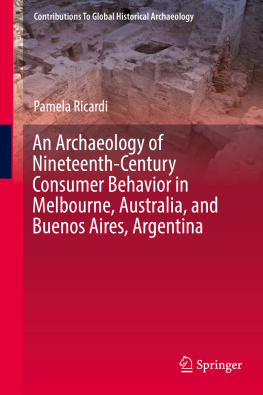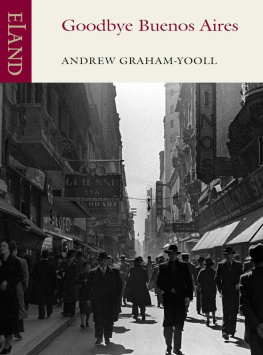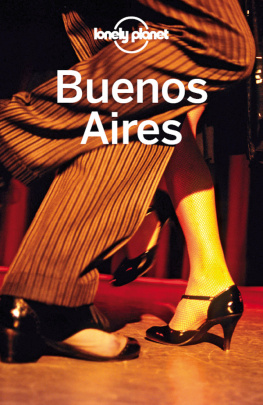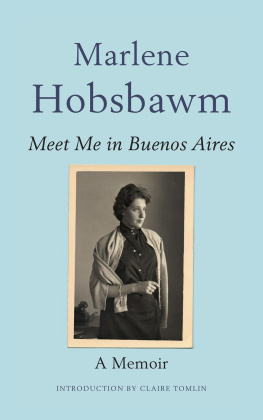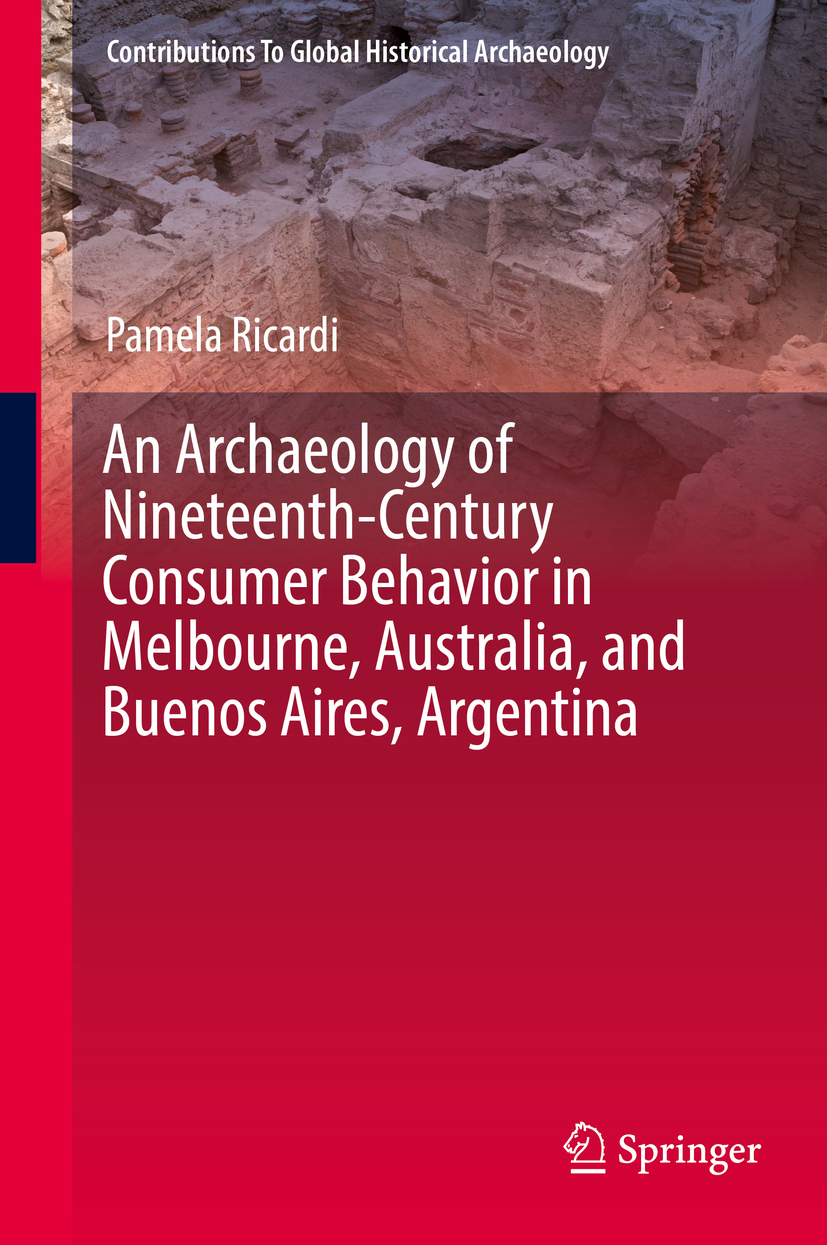Contributions To Global Historical Archaeology
Series Editor
Charles E. Orser Jr.
Vanderbilt University, Nashville, TN, USA
More information about this series at http://www.springer.com/series/5734
Pamela Ricardi
An Archaeology of Nineteenth-Century Consumer Behavior in Melbourne, Australia, and Buenos Aires, Argentina
Pamela Ricardi
School of Archaeology and Anthropology, Australian National University, Acton, ACT, Australia
ISSN 1574-0439
Contributions To Global Historical Archaeology
ISBN 978-3-030-21594-1 e-ISBN 978-3-030-21595-8
https://doi.org/10.1007/978-3-030-21595-8
Corrected publication 2020
Springer Nature Switzerland AG 2020
This work is subject to copyright. All rights are reserved by the Publisher, whether the whole or part of the material is concerned, specifically the rights of translation, reprinting, reuse of illustrations, recitation, broadcasting, reproduction on microfilms or in any other physical way, and transmission or information storage and retrieval, electronic adaptation, computer software, or by similar or dissimilar methodology now known or hereafter developed.
The use of general descriptive names, registered names, trademarks, service marks, etc. in this publication does not imply, even in the absence of a specific statement, that such names are exempt from the relevant protective laws and regulations and therefore free for general use.
The publisher, the authors, and the editors are safe to assume that the advice and information in this book are believed to be true and accurate at the date of publication. Neither the publisher nor the authors or the editors give a warranty, express or implied, with respect to the material contained herein or for any errors or omissions that may have been made. The publisher remains neutral with regard to jurisdictional claims in published maps and institutional affiliations.
This Springer imprint is published by the registered company Springer Nature Switzerland AG
The registered company address is: Gewerbestrasse 11, 6330 Cham, Switzerland
For Marta and Duncan
Acknowledgments
I am truly indebted to a number of people, without whose assistance, this book would not have been possible. This study stems from my PhD dissertation, so firstly, my sincere thanks to my supervisors Professor Tim Murray and Associate Professor Susan Lawrence for their guidance. Thanks also to La Trobe University staff members Dr. Peter Davies for being part of my research panel and to Ming Wei for arranging Figs.. For providing travel funding, I would like to thank the (formerly named) School of Humanities and Social Sciences, La Trobe University.
In Buenos Aires, many thanks to Dr. Daniel Schvelzon, Patricia Frazzi, and Dr. Mario Silveira at the Centro de Arqueologia Urbana, Universidad de Buenos Aires, for their assistance, generosity, and warm welcome. Big thanks also to Aniela Traba for helping me obtain archival data from Buenos Aires.
Thank you to Professor Andres Zarankin, Federal University of Minas Gervais, Brazil, for sharing his knowledge and experience regarding La Casa Pea and providing me with some useful papers.
At Museum Victoria, thanks to Dr. Charlotte Smith and to all the staff at the Moreland Annexe for their assistance and patience. Special thanks to Dr. Sarah Hayes and Paul Pepdjonovic for kindly sharing their knowledge and guiding me in the right direction.
Thanks to Professor Charles Orser, Vanderbilt University, for the inspiration and advice, and to Meg M. Walker for her work on Figs..
Finally, my most wholehearted thanks to my family especially my husband, Duncan Wright, and mother, Marta Ricardi for all the encouragement, support, and steady patience. Thanks to Duncan also for the comments on the earlier drafts of this manuscript.
List of Figures
List of Tables
Springer Nature Switzerland AG 2020
P. Ricardi An Archaeology of Nineteenth-Century Consumer Behavior in Melbourne, Australia, and Buenos Aires, Argentina Contributions To Global Historical Archaeology https://doi.org/10.1007/978-3-030-21595-8_1
1. Introduction
When we think of Melbourne and Buenos Aires in the mid- to late nineteenth century, we imagine two very different places. Buenos Aires had by then experienced a long and diverse history . The city had been settled (twice) by Spain in the sixteenth century. Steadily, it became an important port city due to the growth of local industries such as cattle grazing and a lucrative trade in contraband (Brown :170).
Melbourne had a short history in comparison. The city had been settled in 1835 by a small group of pastoralists from Launceston, in what today is known as Tasmania (then Van Diemens Land). Official authorization to settle the area was not granted until the following year by the governor of New South Wales representing the British Crown (Blainey :11).
Although we initially imagine two very different places, this very brief history of each city has already highlighted some similarities as well. But what was life like for working-class people in the cities urban spaces ? What was life like for the many recently arrived immigrants to Marvellous Melbourne and the Paris of South America ? What were people buying? What was available for them to buy? This book examines these questions through the archaeology of two household units by focusing on what the material culture and documentary data reveal about consumer behavior. In doing so, it makes a transnational comparison of two diverse cities at the edge of the world.
Historical archaeological studies in the past have extensively explored themes such as class (e.g., Beaudry :2) that international comparison is valuable in everything we do as historical archaeologists, because we focus on a period in time marked by the spread of people across the world.
However, when dealing with urban sites within the British Empire, comparative studies in the past have tended to focus on other British colonies, former British colonies, and Britain itself. At least in the English-speaking literature, comparative studies have tended not to stray outside these confines, ignoring other cities outside the British Empire (e.g., Crook ). This absence points to an entire area of research that has been left unexplored.
Researchers (e.g., Brooks and Rodrguez ) have highlighted the potential of South American urban archaeology for broadening our understanding of consumer culture and global interactions during the nineteenth century. It is clear that valuable information can be gained by comparing British colonial sites to South American sites and this is what the current volume aims to provide. The book compares consumer behavior at two sites, Casselden Place in Melbourne and La Casa Pea in Buenos Aires, with a focus on establishing the role that consumer choice , class , ethnicity, and other factors had on consumer behavior. Both sites were located in nineteenth-century working-class urban neighborhoods and are discussed further below.

